10 Best Employee Management Tools | HR Efficiency

Never before has it been harder to manage employees than it is today. Remote work is the new reality, and companies distributed over various places require intelligent applications to ensure all processes proceed smoothly. This is where employee management tools come to the rescue.
These online assistants ensure firms are able to manage their employees regardless of whether they work at home, the office, or a combination of both. Covering time tracking to scheduling shifts, these tools do it all. In this guide, we’ll explore everything you need to know about employee tools and how they can make your business better.
What Are Employee Management Tools?
Employee management tools are software programs that help businesses manage their workers more effectively. Imagine them as digital assistants who deal with the tedious paperwork, work hours, and assist the teams in communicating more.
These tools can accomplish several things, such as:
- Keep track of when employees work
- Help schedule shifts and meetings
- Monitor how well employees are doing
- Make it easy for teams to talk to each other
- Store important employee information
The best part? These management tools work on computers, phones, and tablets, so you can use them anywhere, anytime.
Why Use Employee Management Tools?
Using management tools brings many benefits to your business:
- Save Time and Money: The tools automate repetitive processes, thus you, as a business person, spend less time doing paperwork and more time expanding your business.
- Better Communication: Information can be easily shared, and groups are able to keep in touch even when they work in different locations.
- Improved Productivity: Once it is all set and conveniently located, the staff can devote their time to doing real work rather than wasting it searching for information.
- Reduced Errors: Automated systems cause fewer errors compared to manual processes, and this translates to more accurate records.
- Happy Employees: The smoothness and simplicity of the work processes make employees less stressed and more contented with their work.
Key Features of Employee Management Tools
Good management tools should have these important features:
- User-Friendly Interface: The tool must be user-friendly so that all people know how to operate it without mixing it up.
- Time Tracking Capabilities: Built-in time tracking tools help monitor work hours and ensure accurate payroll processing.
- Employee Scheduling Software: Advanced employee scheduling software helps create work schedules and manage shift changes easily.
- Performance Monitoring: Performance management software tracks how well employees are doing and helps identify areas for improvement.
- Communication Features: Communication and collaboration tools keep teams connected through chat, video calls, and file sharing.
Top 10 Employee Management Tools in 2025
1. Zluri
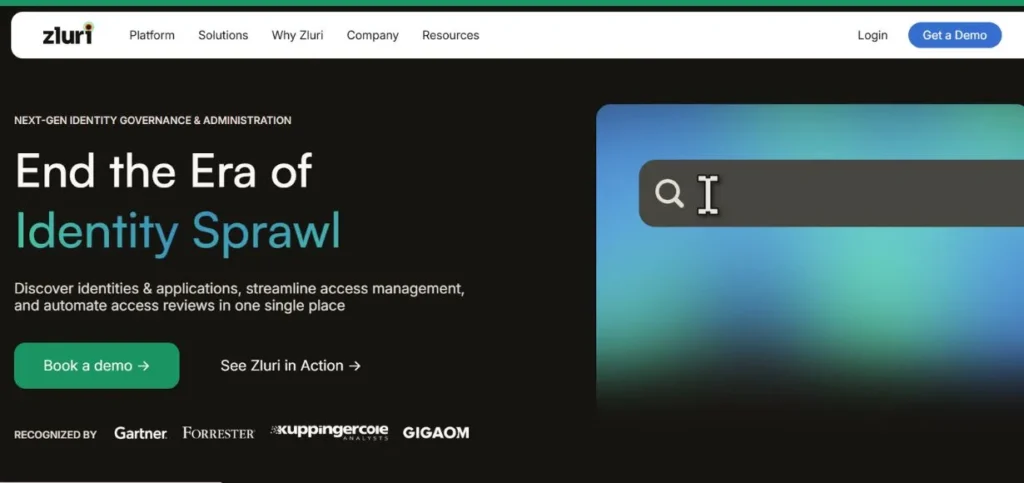
Zluri is one of the solutions that excel when it comes to the management of employees and applications in contemporary working environments. This is a one-stop solution, which performs the tasks of onboarding new employees as well as their access to various software applications. It is particularly helpful when a company has a remote or hybrid workforce since it offers the full picture of who the users of which applications are and when. The site has intelligent technology to identify all the applications within your organization and helps to make sure that everyone has the appropriate access to work in their job effectively.
Key Features:
- Workflows for automated onboarding of employees.
- Total access control to applications.
- Security access reviews as often as possible.
Pros:
- Saves a lot of time daily.
- Minimizes security threats.
- Compatible with current systems.
Cons:
- May need first training.
- Higher cost for features
- Complexity is complicated for small businesses.
Best For: Enterprises
Pricing: Request Pricing
Website: https://zluri.com
2. BambooHR
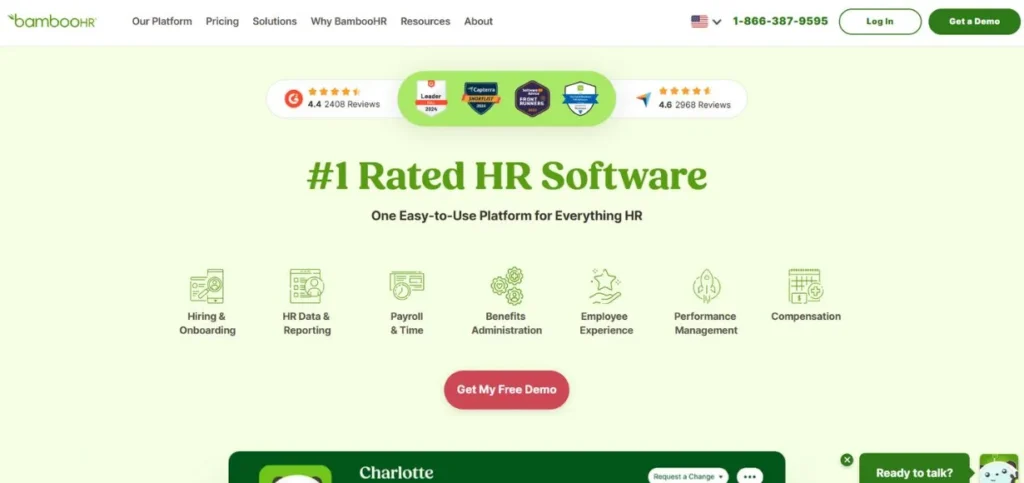
BambooHR is a well-known human resource management system that simplifies the act of employee management. It is modeled on small to medium-sized companies that do not need to complicate their HR procedures. The platform deals with the recruitment of new employees, as well as the management of their data during their tenure in the firm. BambooHR has a reputation for having an aneasy-to-usee, clean interface that does not need any technical knowledge to work well.
Key Features:
- The support of electronic signatures.
- Onboarding packet templates are customizable.
- Detailed management of the employee database.
Pros:
- Very easy to use
- Large customer care services.
- Low pricing schemes are available.
Cons:
- Few advanced reporting capabilities.
- Simple performance management tools.
- Fewer integration choices.
Best For: SMBs
Pricing: Starts at $10/mo per employee
Website: https://bamboohr.com
3. Hubstaff
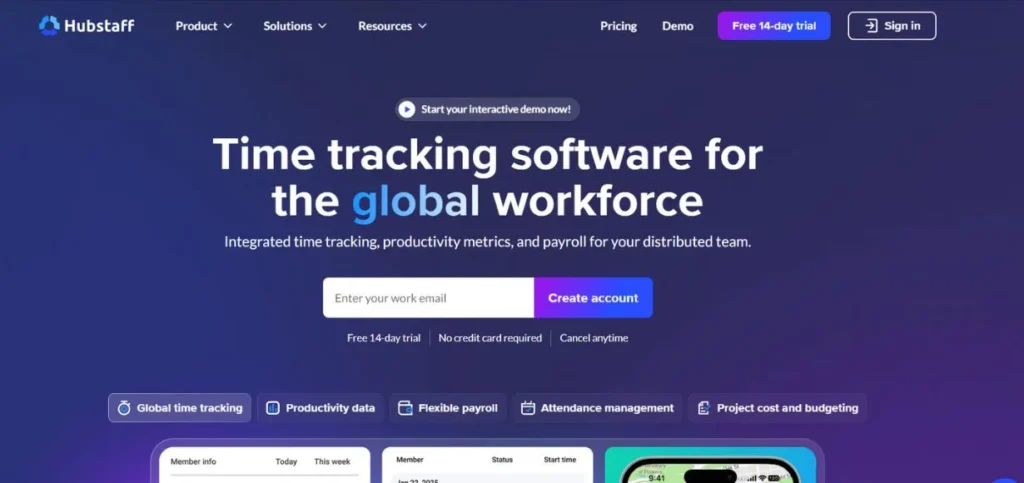
Hubstaff is a time tracking and productivity monitoring tool that works with remote and distributed teams. The tool assists businesses in knowing what their employees use their working time on and the most profitable projects. It is specifically beneficial when the companies charge their customers per hour or when the companies require a thorough understanding of the expenses of projects. Hubstaff combines time tracking tools with project management features to give managers a complete picture of team performance and productivity levels.
Key Features:
- In-built time tracking.
- Several project view selections.
- Automated system of scoring productivity.
Pros:
- Proper time tracking facilities.
- Detailed reports of productivity generated.
- GPS tracking for location
Cons:
- Can feel invasive sometimes
- Weak project management characteristics.
- Needs the internet at all times.
Best For: Freelancers
Pricing: Starts at $10 insightstrial/seat/mo, 2-seat minimum.
Website: https://hubstaff.com
Suggested Read: Top Employee Recognition Software
4. Asana
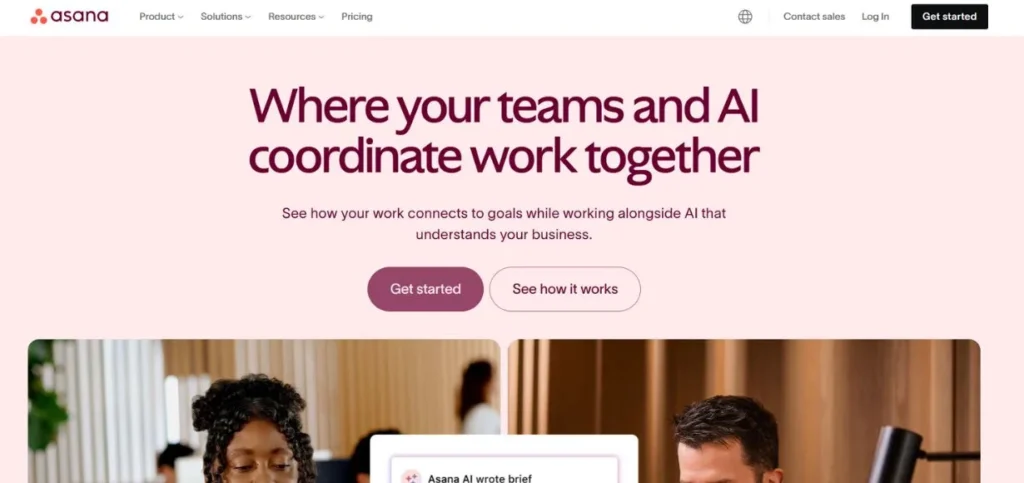
Asana is a multi-purpose project management tool that assists teams in organizing their work and monitoring their progress on different assignments and projects. It is made to eliminate email chains and spreadsheets with a more structured system whereby everybody can view what has to be done and when. The platform has various options to see work either as simple lists or as more complex timeline views, which makes it flexible to various types of work and to the tastes of teams.
Key Features:
- Smooth task structure system.
- Detailed notification preferences.
- Several project view selections.
Pros:
- Free version available
- Intuitive interface design was offered.
- Excellent as a group effort.
Cons:
- It may reach a point of being overwhelming.
- There are restricted time tracking capabilities.
- High learning cost in the beginning.
Best For: Teams
Pricing: Starts at US$10.99 per user, per month, billed annually
Website: https://asana.com
5. Slack
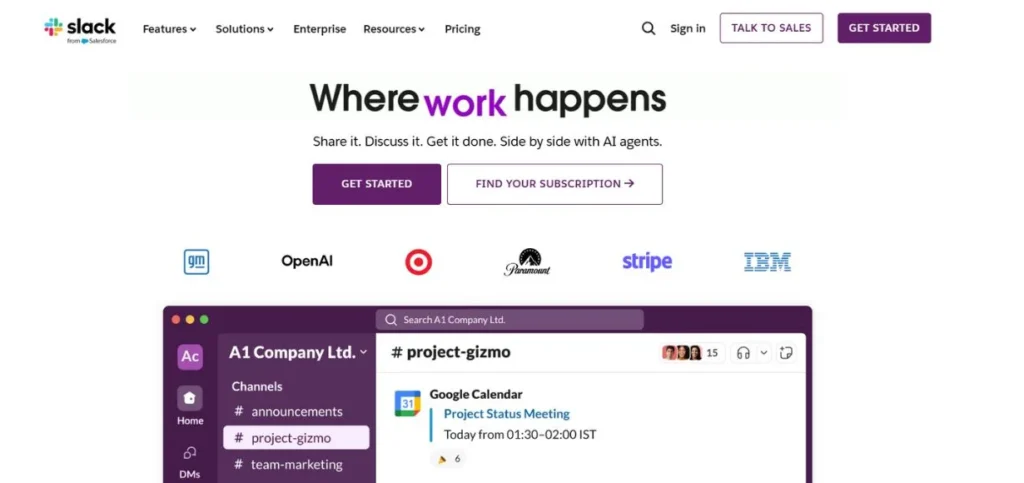
Slack transformed the way communication happens in the workplace by categorizing conversations into channels according to topics, teams, or projects. This communication and collaboration tools platform makes it easy for remote teams to stay connected and share information quickly. Teams can also communicate in real time instead of the long email threads where everyone interested can follow. Slack also includes hundreds of other tools; hence, it is a hub of workplace communication.
Key Features:
- Structured channel communication system.
- Strong search options are built in.
- Available notification preferences.
Pros:
- Teamwork communication is great.
- Millions of application integrations.
- Works on all devices
Cons:
- Sometimes it is distracting.
- Messages get lost easily.
- Paid plans are rather costly.
Best For: Communication
Pricing: Starts at ₹245.25 per user/month, when paying yearly
Website: https://slack.com
Also Read: Top Learning Management Systems (LMS)
6. Clockify
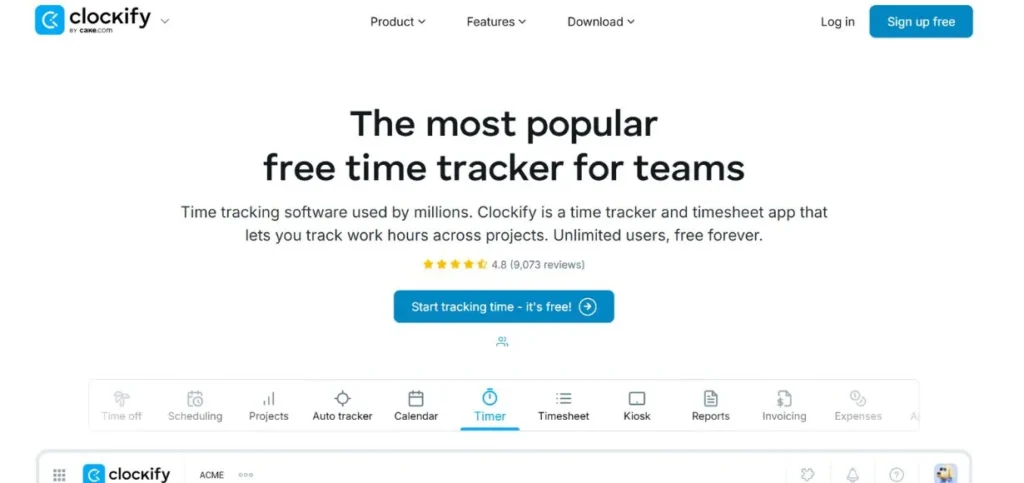
Clockify is an easy and yet effective time tracking tool that assists companies in tracking the usage of their working hours by their workers. It is totally free for unlimited users and, therefore, is a good choice for small businesses and start-ups. The platform gives detailed reports on the use of time, and managers can know the projects that are lagging behind schedule and may need to improve productivity. Clockify is compatible with every device and is able to count time either automatically or manually.
Key Features:
- Idle time is detected automatically.
- Extensive time tracking reports.
- Free unrestricted user accounts.
Pros:
- Completely free to use
- Simple and clean interface
- Awesome Reporting Features
Cons:
- Weak project management skills.
- Simple user authorization access.
- No phone support available
Best For: Startups
Pricing: Contact For Pricing
Website: https://clockify.me
7. ServiceNow ITSM
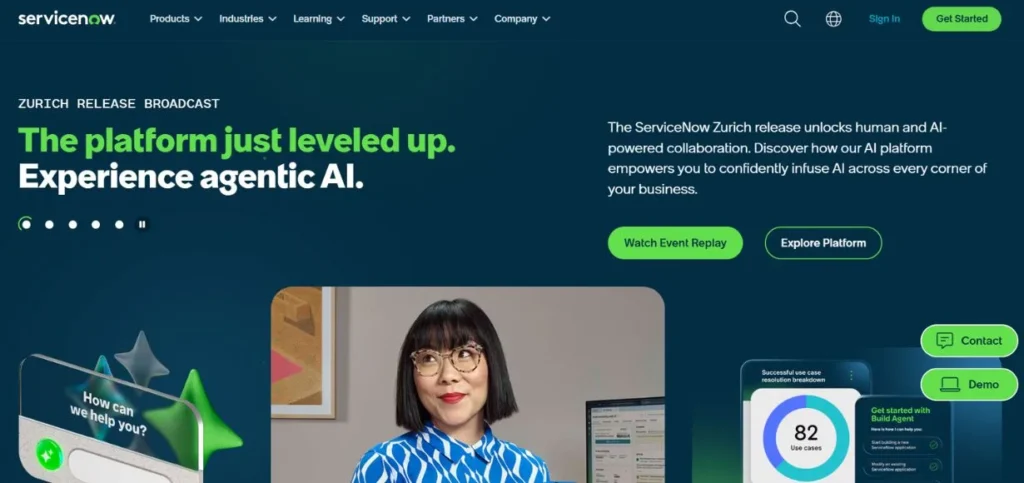
ServiceNow ITSM is an enterprise-level system that is meant to make IT services management and support simpler. It assists organizations in handling both simple and complex IT projects, as well as help desk requests. It has artificial intelligence that automatically directs requests to the appropriate team members and offers solutions to past incidents. This is why it is especially beneficial to large companies with complicated IT requirements and plenty of staff members in need of technical assistance.
Key Features:
- An incident management system that uses AI.
- An embedded recommendation engine is provided.
- Inbuilt automation of workflow.
Pros:
- There are strong automation capabilities.
- Scales well for enterprises
- State-of-the-art reporting and analytics.
Cons:
- Very expensive to implement
- It is a complicated configuration procedure.
- High learning curve in the beginning.
Best For: Enterprises
Pricing: Request Pricing
Website: https://servicenow.com
8. Teramind
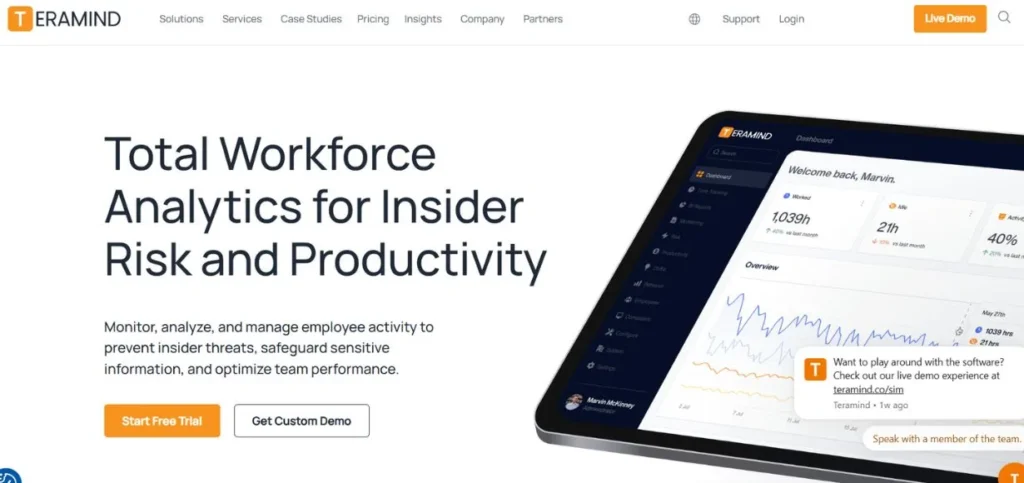
Teramind is a high-tech employee surveillance tool that offers comprehensive information on the way employees spend time and use the work computer. It is created to suit businesses that would need to comply with productivity and security requirements. The platform can trace websites accessed to apps utilized, giving managers detailed information on the activities of the employees. Such tools are powerful, but one should use them openly and with the consent of the employee.
Key Features:
- Live monitoring feature.
- A behavioral alert system was included.
- In-built extensive security features.
Pros:
- Extremely precise monitoring features.
- Powerful security properties were included.
- A customizable alert system can be used.
Cons:
- Can damage employee trust
- Privacy concerns may arise
- Expensive for small teams
Best For: Security
Pricing: Contact For Pricing
Website: https://www.teramind.co/
Read More: Top Professional Services Automation Software
9. Basecamp
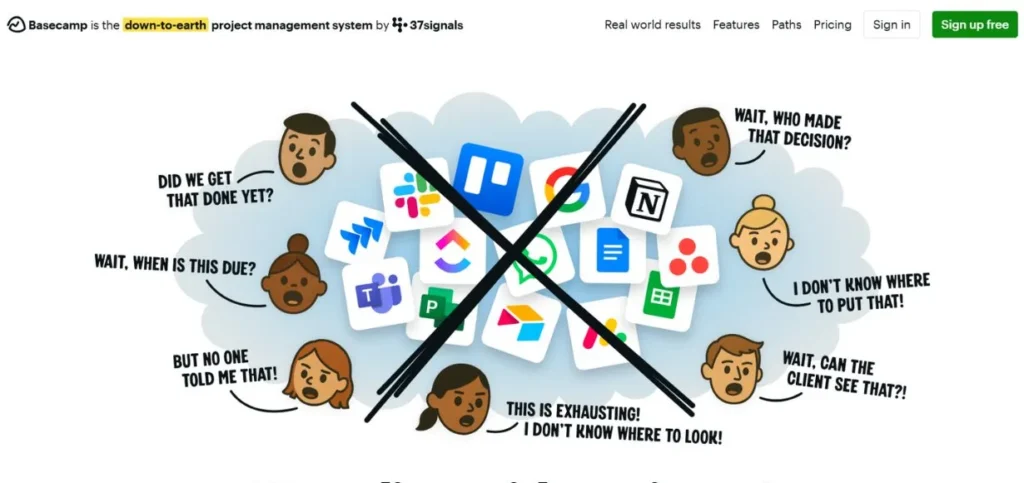
Basecamp approaches project management in a different way by ensuring that things are kept simple and in order. It does not overload users with functionalities but prioritizes the basics, which are to plan the projects, allocate work, exchange files, and conversation with team members. The platform is user-friendly such so any person can use it without taking on the rigorous training course, so it has been popular with teams who would like to start immediately without a complex system set up.
Key Features:
- Basic project order system.
- Group chat option in real time.
- The client access portal was also incorporated.
Pros:
- Very simple to use
- Offered a Flat pricing structure.
- Excellent in collaboration with clients.
Cons:
- Lacks has advanced project features.
- No time tracking included
- Poor customization provided.
Best For: Simplicity
Pricing: Starts at $15/user per month
Website: https://basecamp.com
10. Okta Workforce Identity
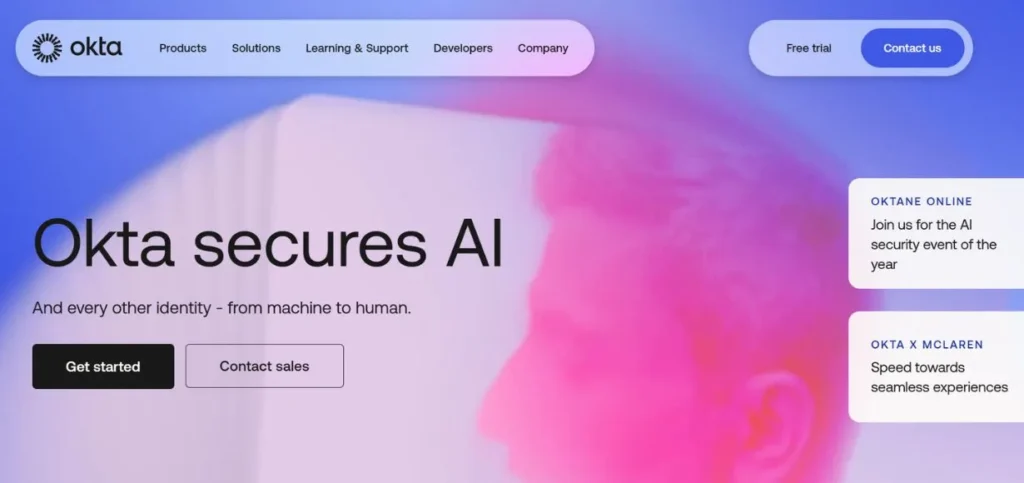
Okta Workforce Identity is dedicated to the user authentication of different applications and systems in an organization. It offers one sign-on, which implies that employees are able to use the same set of login details to access all their work applications. This helps in enhancing security as well as easing the lives of employees because they do not have to remember a number of passwords. This is especially useful to organizations that use a wide variety of software.
Key Features:
- Single sign-on capabilities supplied.
- Security: Multi-factor authentication is provided.
- User lifecycle automation.
Pros:
- Powerful security features comprise
- Easy single sign-on
- Automated user control is enabled.
Cons:
- Costly to small businesses.
- Difficult initial installation needed.
- Poor customization provided.
Best For: Security
Pricing: Contact For Pricing
Website: https://okta.com
How to Choose the Right Employee Management Tool for Your Business
Selecting the best employee management tools for your company requires careful consideration:
- Assess Your Business Needs: Determine particular issues you are interested in resolving, including time management, time scheduling, or communication.
- Consider Your Budget: Find the tools that offer a good price and do not exceed the budget.
- Check Clearing Facilities: Make sure that the tool is compatible with your installed software and systems in order to prevent disruptions.
- Evaluate User-Friendliness: Select tools with which your employees can work without a high level of training.
- Think About Scalability: Select employee management tools that can grow with your business as you hire more employees.
Common Mistakes to Avoid
When implementing employee management tools, avoid these common pitfalls:
- Choosing Too Many Tools: This can be done on many platforms; however, multiple platforms mean that you are presenting your team with a lot to deal with. You can be assimilated into one unanimous solution instead.
- Ignoring Employee Training: Ensure proper training is conducted to make sure that all people are familiar with the new management tools.
- Missing the consideration of Mobile Access: Choose what works with smartphones and tablets so that there is maximum flexibility and convenience.
- Overlooking Data Security: Always ensure that the tools are secured properly to make sure that both employee information and company data are not leaked.
- Failure to develop clear Policies: Develop a standard on the use of these management tools and the time to make them work best.
Conclusion
Employee management tools have become essential for modern businesses looking to stay competitive and efficient. Whether you need employee scheduling software to organize shifts, time tracking tools to monitor productivity, performance management software to evaluate workers, employee engagement tools to boost morale, or communication and collaboration tools to keep teams connected, there’s a solution available.
The trick lies in the ability to choose the appropriate employee tools that would suit your needs, financial resources, and organizational culture. You can start with a tool to assist you in addressing the most pressing issue, and later on, you can add to your toolset as your firm grows. It is important to remember that the most useful are the employee tools that are actually used by your team and are helpful. You are investing in the future of your company and the satisfaction of your employees by investing in the appropriate management tools.
FAQs
1. What are employee management tools, and why do I need them?
Employee tools are software programs that help businesses organize, track, and manage their workforce more effectively. You require them to save time spent on administrative matters, enhance communication, minimize errors, and maintain happy and productive employees.
2. How much do employee management tools typically cost?
Prices are broadly based on the characteristics and size of the company. Simple instruments are free of charge, but more thorough enterprise tools are priced at ten to fifty dollars per employee/per month. Most of them have a free trial so that you can try it out first.
3. Can small businesses benefit from employee management tools?
Absolutely! The small businesses can be the greatest beneficiaries due to the fact that such tools can be used to compete favorably with the large companies, as they are able to automate operations, enhance efficiency without necessarily being forced to employ more administrative personnel.
4. Are employee management tools difficult to implement?
Most modern employee tools are designed to be user-friendly and quick to set up. Implementation support, training materials, and customer service are also available with many providers to enable you to start off with ease.
5. How can I tell whether an employee management tool is working in my business?
Seek better productivity, less time spent in administration, higher employee satisfaction levels, fewer scheduling issues, and improved record keeping. The majority of the tools also have analytics to follow these metrics.
